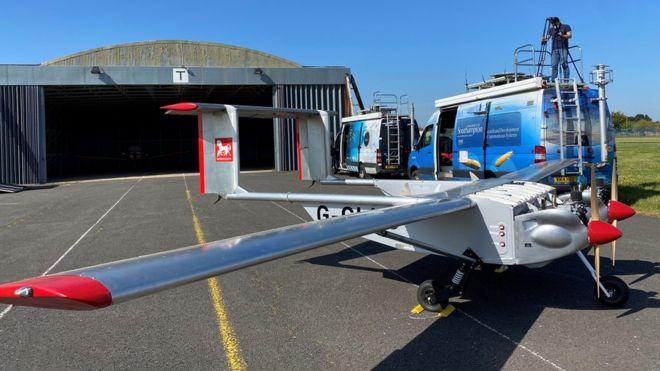
Grant Shapps, Secretary of State for Transport, told millions of viewers watching the Friday BBC TV briefing on the covid-19 pandemic that a planned trial to deliver medical supplies to the Isle of Wight (IOW) by drone would be “fast tracked” and begin this week.
In March, the government announced funding for drone tests and a new air traffic control system around Southampton. But Mr Shapps said there was an “urgent need” for the trial to begin sooner than planned.
Ferry crossings to IOW are currently reduced due to the spread of coronavirus. An unmanned aerial vehicle (UAV) can make the crossing to the Isle of Wight in about 10 minutes. According to the BBC Website, the government expects about four flights per day to be made, depending on the needs of the NHS. A spokeswoman told the BBC that the first flights would carry PPE. However, in future the drone could deliver time-critical supplies such as blood and organs.
The trial will use a petrol-fuelled Windracers Ultra fixed-wing drone, capable of carrying 100kg for up to 1,000km (621 miles). Initially, the drone will not carry its maximum payload.
The Department for Transport said the craft would fly autonomously along a fixed route between Lee-on-the-Solent in Hampshire and Binstead on IOW. Two safety pilots – one at each airfield – will oversee each flight. However, the route has not yet been approved by the Civil Aviation Authority (CAA) and the trial cannot start without permission. After goods have been dropped off at the airfield, they will be delivered to St Mary’s hospital on the Isle of Wight by road.
In March, the government gave £28m of funding to Solent Transport to help it create a “future transport zone” and test new ideas. That funding included more than £8m for the company and the University of Southampton to develop the UK’s first unmanned traffic-management system (UTM) to integrate drone flights into normal air traffic control.
The NHS delivery trial will operate without this UTM, as it is still being developed as part of the overall project. A “temporary danger area” is being set up for 90 days, to separate the drone from other air traffic.
“The lack of a traffic-management system does raise questions as to how everything will be planned during delivery,” Ravi Vaidyanathan, a robotics lecturer at Imperial College London, told the BBC.”But I think it does have a lot of potential to help people. No matter what happens, they will learn a lot from it, which will accelerate the pace of development.”
For visual information

